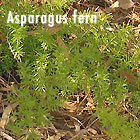If you live near the bush, it’s a good idea to keep an eye out for any weed seedlings and remove them immediately. Weeds are always a worry in bushland areas, particularly in places where there are high water and nutrient levels. Don pulled up some weeds growing near a leaking septic tank, including asparagus fern (Protasparagus densiflorus) and fireweed (Senecio madagascariensis). Fireweed can be poisonous to stock, particularly horses. Don also found something he wasn’t expecting: Japanese sacred bamboo (Nandina domestica). Birds must have eaten the nandina berries from a garden plant nearby, then flown off and deposited the seeds with their droppings.
Ban nandinas!
Some ‘weed nazis’ say that many common garden plants, including nandina and agapanthus (Agapanthus praecox), are potential weeds and should be banned. Don agrees that some plants are worth banning. A good example is the rhus tree (Toxicodendron succedaneum), which causes serious contact allergies. However, he pointed out that most plants (even Australian natives) have the potential to become weeds, but this doesn’t mean they should all be banned
What to do
Remove weed seedlings whenever you see them Keep water and nutrient levels down in bushland areas Work with government bodies to develop smart policies for control and removal of weeds in areas where they are unacceptable Join your local bush regeneration group
For more information
Contact your local council for information on weeds in your area. Some councils produce pamphlets/booklets listing problem weeds and methods of dealing with them. If you live in a bushland area, the council can also put you in touch with your nearest bush regeneration group.
Visit the Weeds Australia website at: www.weeds.org.au



